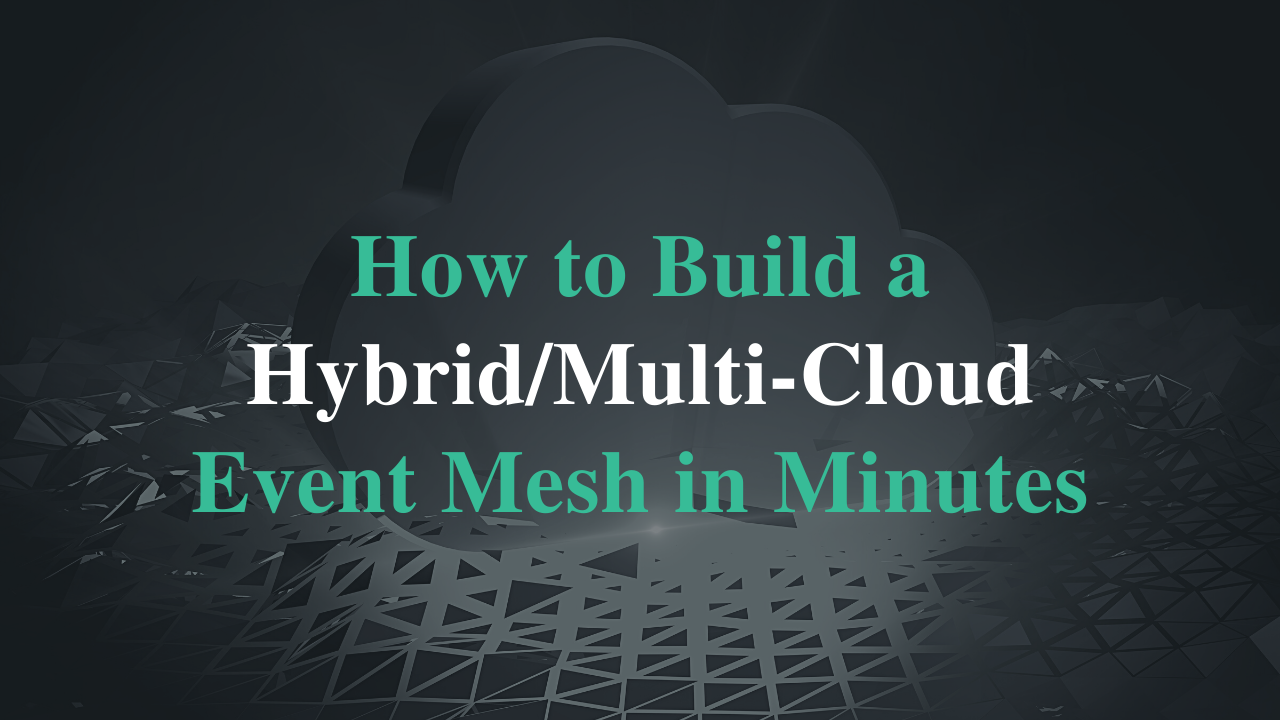Okay, you’re a hip, modern enterprise – no more monoliths for you! You’re adopting microservices and moving your applications and data out of the data center and into the cloud, when it makes sense. But while you can move some of your workloads or databases to the public cloud to save money or take advantage of specific cloud-native capabilities, you can’t lift and shift everything. Some things have to stay on premises for security considerations, for example, or some data may have to stay in specific countries to comply with data sovereignty regulations.
And while using multiple hosting environments may make sense from both a business and technology perspective, it does complicate the task of making sure information flows where and when it needs to. This is even more pronounced if you’re trying to take advantage of real-time information in your business processes and adopting event-driven architecture to do so. How do you easily tie it all together?
What is an event mesh?
Solace was an early proponent of using an event mesh to smoothly manage data flow between distributed applications. An event mesh is an architecture layer that allows events from one application to be dynamically routed and received by any other application, no matter where these applications are deployed (no cloud, private cloud, public cloud), or without the applications even having to know about each other. This layer is composed of a network of event brokers.
Many of our customers agree with this approach. SBB (Swiss Rail), who runs the highest-trafficked railway system in the world, uses a Solace-powered event mesh to facilitate communications between microservices on premises and in the cloud to optimize rail network capacity and customer provisioning.
Another customer – a global manufacturer of elevators and escalators – is using an event mesh connect applications based in China on Huawei Cloud with systems deployed in AWS regions in Europe. The mesh provides managed event streaming services that deliver reduced passenger waiting times for elevators, as well as higher reliability and uptime by enabling predictive maintenance.
Addressing The Challenges Of Building An Event Mesh With Mesh Manager
While the concept of using an event mesh to share information and data between distributed applications is elegant, building an event mesh wasn’t always so straightforward. Even with Solace event brokers, which come with dynamic message routing built in, you had to have specific knowledge of the broker technology, their hosting environments, passwords, port settings and more. This meant setting up an event mesh could be an involved task sometimes prone to errors. And adding or removing event brokers or making other changes was also a technical affair.
As you may have guessed by the title of this post, that’s no longer the case. Solace is adding to PubSub+ Cloud a new feature called Mesh Manager that reduces the amount of time and effort it takes to build and manage an event mesh to mere minutes. Mesh Manager, which is currently in beta and accessible via the centralized cloud-based console, lets you:
- Build a hybrid- or multi-cloud event mesh in seconds
- Update the event mesh to add or remove event broker services
- Validate the event mesh is health by sending health traffic across the mesh
- Easily automate event mesh creation using the REST API (coming as part of GA)
With these capabilities, you can now easily create and manage your hybrid/multi-cloud event mesh from a single unified console, without needing any technical expertise. Here’s a quick demo where you can see it in action.
So if you have applications and data sitting in various deployment environments and geographic locations, Mesh Manager will remove the time and effort required to set up a dynamic event distribution network and let you focus on building applications and microservices that create value for your business.

 David Charles
David Charles Mark Spielman
Mark Spielman

